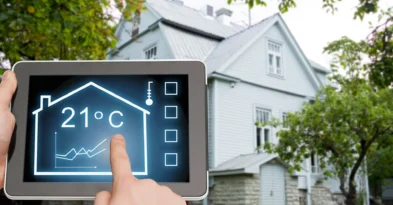Mental Health and Home Environment: New Dimensions in Insurance
Mental Health and Home Environment The relationship between home environment and mental health has received a lot of attention lately, showing how our living environments have a big impact on our mental health. There is a rising interest in how house insurance might change to reflect and accommodate these demands as mental health disorders become more widely recognized. This article looks at the growing relationships between home surroundings and mental health, how insurance might help with these aspects, and what the future holds for this developing profession.

The Impact of Home Environment on Mental Health:
The Psychological Significance of Space
A home is a haven that influences and mirrors our mental condition, more than just a physical building. Empirical studies have demonstrated that the layout, arrangement, and state of our living environments can have a substantial impact on our emotional state, stress levels, and mental well-being. Anxiety or calmness can be influenced by elements like clutter, noise levels, and natural light.
Home Environment and Mental Health Disorders
Depression and Anxiety
Poor lighting, lack of privacy, and noise pollution can worsen symptoms of depression and anxiety.
Post-Traumatic Stress Disorder (PTSD)
A home environment that lacks security or triggers past trauma can hinder recovery and contribute to heightened stress.
The Role of Home Insurance in Addressing Mental Health:
Current Insurance Coverage and Limitations
Home insurance has typically placed a greater emphasis on liability and property damage than it has on the effects that the home environment has on mental health. Ordinarily, standard plans cover physical damage resulting from theft, storms, and fires, but they do not specifically address psychological issues.
Emerging Trends in Insurance
Coverage for Home Modifications
Policies that cover modifications aimed at improving mental health, such as creating a calming space or enhancing privacy.
Mental Health Resources
Offering access to mental health professionals or support services as part of the insurance package.
Incentives for Wellness Features
Providing discounts or incentives for homes equipped with features that promote mental well-being, such as soundproofing or wellness-focused design elements.

Case Studies and Pilot Programs
Many insurers have started testing the incorporation of mental health factors into homeowner’s insurance through pilot projects. As an illustration
Wellness-Oriented Policies
Some insurers have introduced policies that cover wellness-related home improvements, such as soundproofing or adding natural elements.
Mental Health Support Services
Certain insurers are partnering with mental health organizations to offer policyholders access to counselling and support services.

The Future of Mental Health and Home Insurance:
Innovative Policy Features
Customized Coverage Plans
Tailored insurance plans that address specific mental health needs and home environment factors.
Preventive Measures
Coverage that supports preventive measures, such as stress-reducing home modifications and wellness programs.
Technology and Data Integration
Smart Home Technology
Integration of smart home devices that monitor and manage environmental factors affecting mental health, such as lighting and noise levels.
Data-Driven Insights
Using data analytics to understand the relationship between home environments and mental health, leads to more informed insurance offerings.

Conclusion
One important and developing aspect of house insurance is the relationship between mental health and the home environment. Insurance companies are starting to investigate ways to address mental health through innovative policies and supportive measures as their understanding of this relationship grows. A more comprehensive strategy that recognizes and supports the significant influence that living environments have on mental health may be the way that house insurance is provided in the future.
FAQs…
What is the relationship between home environment and mental health?
The atmosphere at home has a big influence on mental health. The lighting, noise level, and clutter are a few examples of factors that might affect mood, stress levels, and psychological health in general. For example, places that are tidy and well-lighted are linked to better mental health, whereas those that are disorganized and dimly lit might make anxiety and depression worse.
How can home insurance address mental health concerns?
Home insurance has traditionally concentrated on liability and physical harm. Nonetheless, a growing number of insurers are starting to include mental health issues in their coverage. Incentives for wellness features like soundproofing or naturally inspired design elements, as well as coverage for home renovations that support mental health, might be included.
Can my home insurance provide access to mental health professionals?
In order to provide policyholders with access to mental health doctors and support services, some insurers are investigating joint ventures with mental health groups. In certain situations, this could be an extra benefit or a component of an insurance plan with a wellness focus. It’s a good idea to find out if your insurance covers any mental health support programs.
How can smart home technology impact my insurance coverage?
By offering information that helps control risks and improve safety, smart home technology can have an impact on insurance coverage. Security cameras, environmental sensors, and smart smoke detectors are a few examples of devices that can cut hazards and possibly premiums. If a home has this kind of technology installed, some insurance companies might give incentives or reductions.




Leave a Reply